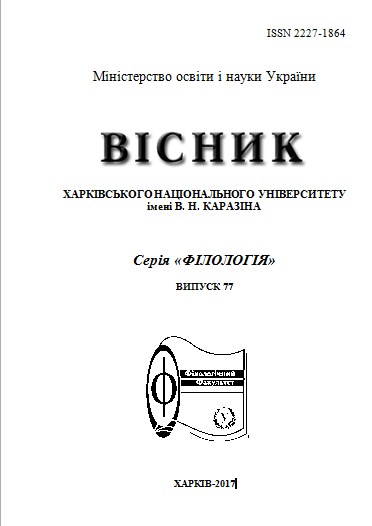The Flower Metaphor in Ivan Turlenev’s Novella “The Torrents of Spring”
Abstract
The article discusses the metaphorical use of names of flowers in fiction by analyzing Ivan Turgenev’s novella “The Torrents of Spring”. The study shows that when these names of flowers have become means of creative thinking, they can acquire new shades of meaning, and newly associated feeling and evaluation. The flower metaphor allows readers to experience the world of souls of the protagonists, and to understand the delicate relationship between man and nature embedded in the work. The article mainly focuses on the aesthetic function of these names, which are used in the key scenes of the story, and in revealing full images of the protagonists. It analyzes the role of the following flowers such as “rose”, whose image pervades the entire work; “mignonette and white acacia flowers” and “a clump of high lilacs”, which accompany the protagonists in their dating; and “yellow lilies” and “camellias”, which are the embodiment of the heroine, Maria Polozova. In the novella, names of flowers are the expressions of the author’s main ideas, and they help the reader to empathise with the protagonists.
Downloads
References
2. Золотницкий Н. Ф. Цветы в легендах и преданиях / Н.Ф. Золотницкий. – М.: Фирма «Т-Око», 1992. – 361 с.
3. Лихачёв Д. С. Поэзия садов: к семантике садово-парковых стилей. Сад как текст / Д.С. Лихачёв. – 2-е изд., испр. и доп. – СПб.: Наука, С.-Петербургское отделение, 1991. – 343 с.
4. Селиванова И.Н. Растительный код в новелле «Учитель словесности» / И.Н. Селиванова // А.П. Чехов: варианты интерпретации: сборник научных статей. Вып. I [Текст] / под ред. Г.П. Козубовской, В.Ф. Стениной. [Серия «Лицей»]. Барнаул, 2007. – С. 34–48.
5. Сонькин В. В. Иван Сергеевич Тургенев. Вешние воды. Рандеву с ностальгией [Электронный ресурс] / В.В. Сонькин // Русский журнал – 2003. – №13. – Режим доступа к журн.:
http://old.russ.ru/journal/kniga/99-03-05/sonkin.htm
6. Тургенев И. С. Дым; Новь; Вешние воды; Стихотворения в прозе / И.С. Тургенев. – М.: Художественная литература, 1981. – 608 с.
7. Цивьян Т. В. Просвечивающие мотивы (Тургенев у Комаровского) / Т.В. Цивьян // Язык: тема и вариации. Кн.2: Античность. Язык. Знак. Миф и фольклор. Поэтика. – М.: Наука, 2008. – С.281–294.
8. Чернышева В. Г. Легенды и поверья о растениях [Электронный ресурс] / В.Г. Чернышева // Природные символы в русско-украинской народной культуре. – Режим доступа к ст.: http://myphs.jimdo.com
9. Энциклопедический словарь крылатых слов и выражений / [Авт.-сост. Серов В.В.]. – М.: Локид-Пресс, 2005. – 880 с.




